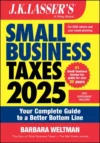Change in Marital Status Killed the Premium Tax Credit
A woman with a dependent child purchased health coverage from the Health Insurance Marketplace (Exchange), which determined she was eligible for an advance premium tax credit for 2015 of $371 per month ($4,452 for the year), which was applied against her monthly premiums. She got married on November 14th but kept her insurance coverage for the balance of the year. The couple filed a joint return for 2015, but did not attach Form 8962, Premium Tax Credit, to reconcile the advance premium tax credit with what she was eligible for, based on income for the full year. The IRS said she was not eligible for the credit and owed additional taxes.
The Tax Court agreed with the IRS (Timothy Todd Fisher, TC Memo 2019-44). Once she married, household income increased dramatically. She argued that because her household income prior to marriage was below the limit for the credit (400% of the federal poverty line for a family of two), she should be entitled to the credit for the portion of the year up to the marriage. The court disagreed.
There is an alternative computation for taxpayers who are unmarried at the beginning of the year (like the taxpayer in this case), but who marry and file a joint return for the year. A taxpayer’s additional tax liability using the alternative computation is the excess of the advance premium tax credit for the year over the amount of the “alternative marriage-year credit.” The alternative marriage-year credit is the sum of the taxpayer’s alternative premium amounts for the pre-marriage months and the premium assistance amounts for the marriage months. The alternative premium assistance amount for pre-marriage months is the excess of the taxpayer’s benchmark qualified health plan premium amount over the taxpayer’s required contribution amount (which for 2015 ranged from 2.01% to 9.56%). When calculating the taxpayer’s contribution amount for pre-marriage months, each taxpayer uses “one-half of the actual household income for the taxable year and treats family size as the number of individuals in the taxpayer’s family prior to the marriage.”
The court, using the alternative computation for the taxpayer in this case found that she did not qualify for any credit for the year of the marriage. Her alternative premium assistance amount for the 11 pre-marriage months was zero because her benchmark premium was less than her required contribution (based on a family of two). For the marriage month, the premium assistance amount was zero because the household income as reported on the couple’s joint return exceeded 400% of the federal poverty line for a family of three.
As a result, the entire amount of advance premium payments made by the Exchange on the wife’s behalf ($4,452) is an “excess advance payment” that must be added to the couple’s tax liability for 2015. The court was sympathetic to the couple’s argument that it is unfair to require them to repay all of the advance payments since the wife was eligible for the credit before the marriage. However, the court could not ignore the law to achieve an equitable result.
Revocable trust
A trust that may be changed or terminated by its creator or another person. Such trusts do not provide an income tax savings to the creator.



